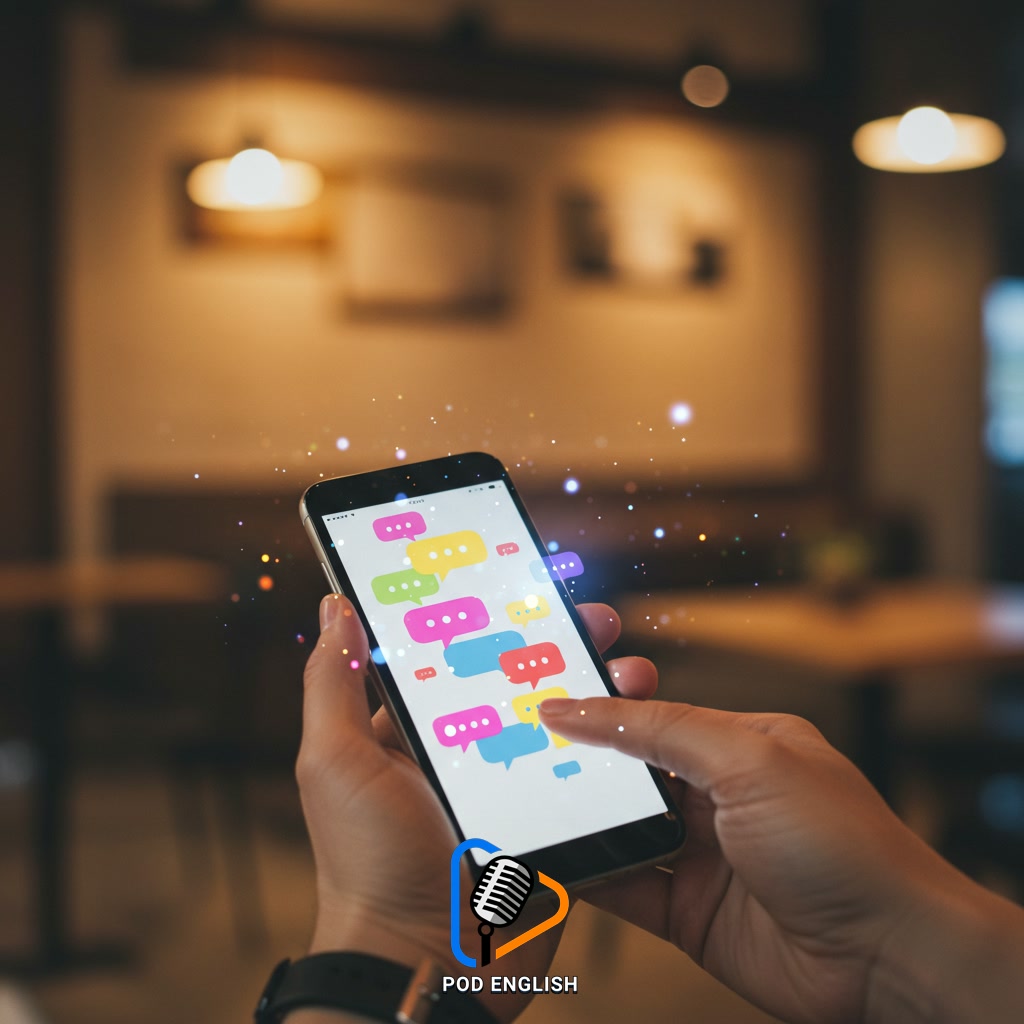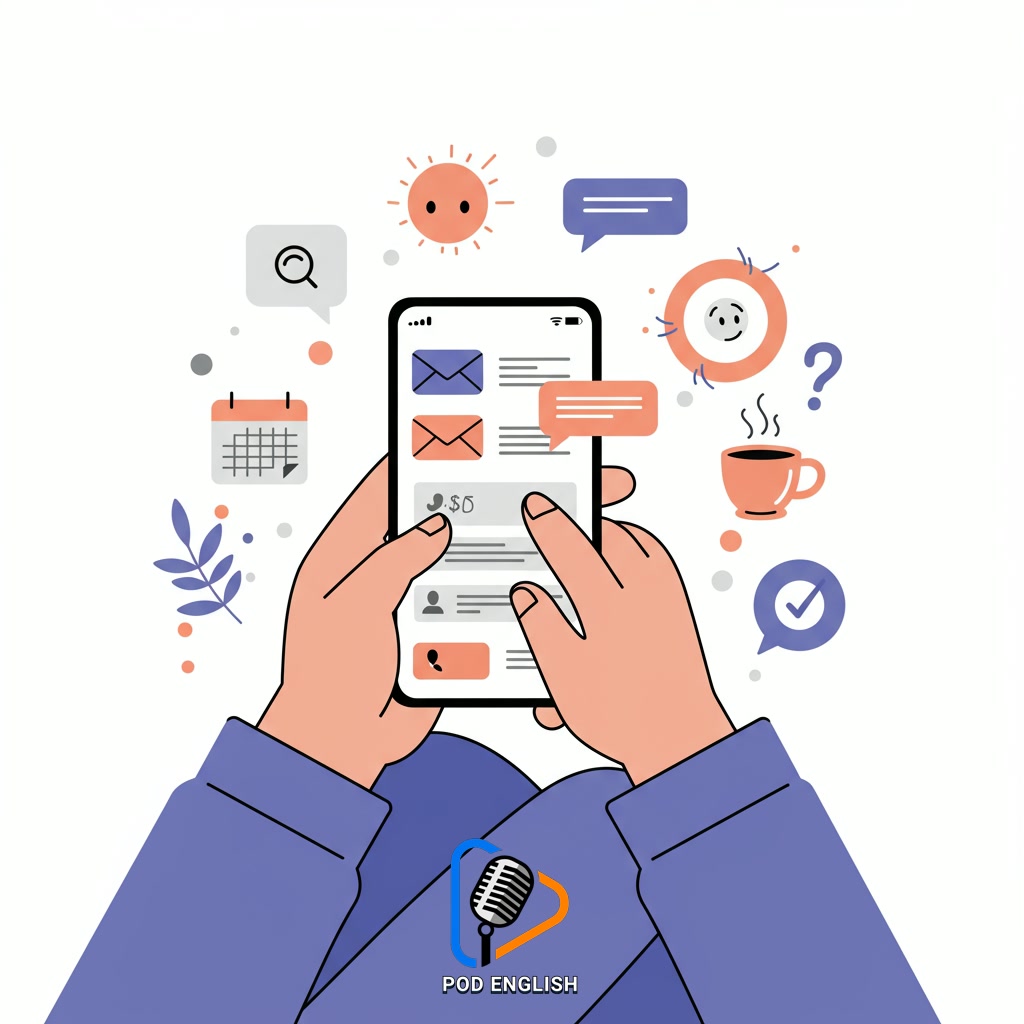Learn English
Learn English Effortlessly: Rewrite Text Messages for Everyday Fluency

This approach outlines a method to Learn English by focusing on practical application. It guides you through rewriting everyday text messages to enhance your fluency. The goal is to make improving your English effortless and build confidence in daily communication. This technique helps develop practical language skills for real-world use.
Table of Contents
- Section 1: Introduction: Why Text Messages are a Great Tool for Learning English Fluency
- Section 2: Understanding Text Language: From Shortcuts and Slang to Standard English
- Section 3: Mastering the Art of Rewriting: Techniques for Transforming Casual Texts
- Section 4: Practice and Examples: Rewriting Common Text Scenarios
- Section 5: Applying Your Rewriting Skills Beyond Texting: Everyday Conversations
- Section 6: Tips for Effortless Learning and Continuous Improvement
Section 1: Introduction: Why Text Messages are a Great Tool for Learning English Fluency
Learning English fluency can feel like a big challenge, but integrating practice into your daily routine makes it much more manageable and effective. One incredibly practical tool for this is something you probably use every day: text messages. Unlike formal essays or speeches, text conversations are short, informal, and use the kind of everyday language native speakers actually use. They provide immediate context and are often low-pressure, allowing you to experiment with phrasing and vocabulary without the anxiety of face-to-face conversation or writing a formal email. By focusing on rewriting and understanding the language in text messages, you gain confidence in using English for real-world communication, building fluency one short message at a time.

Introduction: Why Text Messages are a Great Tool for Learning English Fluency
Section 2: Understanding Text Language: From Shortcuts and Slang to Standard English
Learning English fluency can feel like a big challenge, but integrating practice into your daily routine makes it much more manageable and effective. One incredibly practical tool for this is something you use every day: text messages. Before you can rewrite them into standard English, it’s crucial to understand the language commonly used in texts. This often includes abbreviations like ‘lol’ or ‘brb’, informal slang, and simplified grammar or punctuation. Recognizing these shortcuts and knowing how they differ from formal or standard English is the first step. This section will help you identify these elements so you can then practice transforming them into clear, correct, and standard English sentences, building your practical language skills effortlessly.

Understanding Text Language: From Shortcuts and Slang to Standard English
Section 3: Mastering the Art of Rewriting: Techniques for Transforming Casual Texts
Building on the idea of integrating practice into your daily life, mastering the art of rewriting casual texts is where the real transformation happens. This technique involves taking a simple message you’ve sent or received and actively working to improve its English structure, vocabulary, and clarity. Start by analyzing the original text: what’s the core meaning? Then, explore different ways to express that meaning using more varied words, complete sentences, or more precise grammar. Consider turning abbreviations into full words, correcting any errors, or adding connecting phrases to improve flow. This deliberate act of transforming a casual message forces you to think critically about language choices and apply learned rules in a practical, low-pressure environment, effectively turning everyday communication into a powerful learning tool.

Mastering the Art of Rewriting: Techniques for Transforming Casual Texts
Section 4: Practice and Examples: Rewriting Common Text Scenarios
Building on the idea of integrating practice into your daily life, mastering the art of rewriting casual texts is where the real transformation happens. This technique involves taking a simple message you might send or receive and actively transforming it into different English versions. This section provides practical examples of common text message scenarios you encounter every day, such as asking a friend for a favor, confirming plans, or sending a quick greeting. For each scenario, we will demonstrate how to rewrite the original simple message using varied vocabulary, sentence structures, and levels of formality. By working through these concrete examples, you’ll gain confidence in applying the rewriting method to your own messages and see how effortless improving your everyday English fluency can become. This hands-on practice is key to making the language stick and becoming comfortable using it naturally.

Practice and Examples: Rewriting Common Text Scenarios
Section 5: Applying Your Rewriting Skills Beyond Texting: Everyday Conversations
Building upon your practice of rewriting text messages, the skills you’ve developed are incredibly valuable beyond just typing. This section shows you how to take that ability to rephrase and adapt language and apply it directly to everyday spoken conversations. The same flexibility you gained in finding different ways to express ideas in text messages translates into greater confidence and fluency when speaking. You’ll learn how practicing alternative phrasings for simple ideas helps you think faster on your feet during real-time interactions, making your English sound more natural and effortless in daily chats, meetings, or social situations.

Applying Your Rewriting Skills Beyond Texting: Everyday Conversations
Section 6: Tips for Effortless Learning and Continuous Improvement
Building upon your practice of rewriting text messages, the skills you’ve developed are incredibly valuable beyond just typing. This section shows you how to take that ability to rephrase and adapt language and apply it for truly effortless learning and continuous growth. To make your English journey feel easy, integrate short practice sessions into your existing daily routine – perhaps during a commute or a coffee break. Focus on enjoying the process, celebrating small improvements rather than stressing over mistakes. For continuous improvement, actively seek out new contexts to apply your skills, maybe by trying to rephrase sentences you hear in movies or podcasts. Consistency is key; even short, regular practice sessions build momentum. Embrace the idea that learning is a smooth, ongoing process, not a difficult chore.

Tips for Effortless Learning and Continuous Improvement













